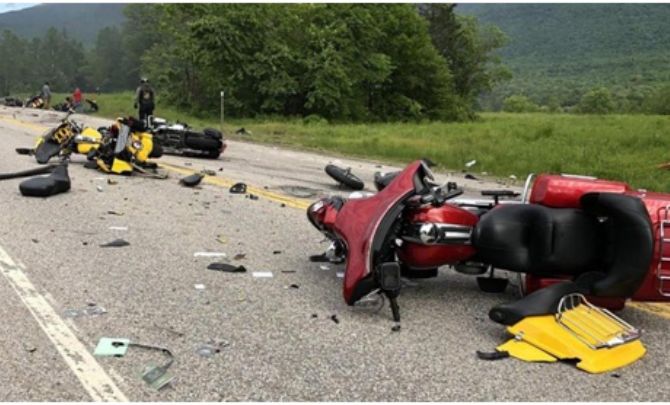Motorcycle accidents cause severe injuries and financial losses. Proving fault is essential for a successful claim. It is important to demonstrate the other party’s negligence caused the accident. As it is a complex process, the assistance of a skilled motorcycle accident attorney can help the victim navigate the legal system. A skilled attorney can build a compelling case for liability.
Understanding Fault in Motorcycle Accidents
The fault in a motorcycle accident is determined by the analysis of evidence and the application of relevant laws. For the victim’s case to be proven without doubt, it has to be proven that the at-fault driver acted negligently, recklessly, or violated traffic rules, which led to the crash.
Key Elements to Prove Fault
- Duty of Care: Duty of care states that the motorcyclist should drive safely and follow traffic laws. For instance, drivers must give way to motorcyclists as required and not indulge in unsafe behaviors like overspeeding or impaired driving.
- Breach of Duty: A breach of duty is when the driver does not meet the duty of care, such as:
- Speeding or reckless driving
- Not check blind spots
- Failing to note oncoming vehicle
- Break a red light or stop signs
- Tailgating or dooring
- Causation: To prove fault, the other party’s negligence as the cause of the accident and your injuries has to be proven. It is dependent on strong evidence. A skilled motorcycle accident attorney can help build and present the case effectively.
- Damages: It has to be proven that the damage suffered was caused by the accident. These damages include payment for treatment, loss of earnings, damage to property, and pain and suffering.
Gathering Evidence to Establish Fault
- Police Reports: A police report is a critical piece of evidence. Details of the accident, such as witness statements, road conditions, and possible violations, will be investigated by the officers as required.
- Eyewitness Testimonies: Testimony of those present at the site provides valuable insight. The case is strengthened, if unbiased accounts of the events and your version of the events are corroborated.
- Photographic and Video Evidence: Photographic evidence of the scene of the accident, dashcam footage, or surveillance footage, damage, and injuries is important to establish fault and reveal crucial details about the opposite party’s behavior.
- Expert Analysis: Analysis of the crash by the reconstruction experts can help determine the cause and the contributing factors. A professional opinion carries a lot of weight in legal proceedings.
Common Challenges in Proving Fault
- Comparative Negligence:Comparative negligence laws differ from state to state. The compensation is decided based on the degree of fault of the injured party. For instance, if it is found that the motorcyclist was speeding at the time of the collision, the compensation will be reduced accordingly.
- Bias Against Motorcyclists: Motorcyclists face bias. It is assumed that they are reckless. Therefore only skilled attorneys can provide clear evidence and persuasive arguments required to strengthen the case.
- Disputed Liability: Insurance companies will try their best to reduce or avoid payments. Strong evidence and expert testimony is important to counter these challenges.
The Role of an Attorney
A motorcycle accident attorney is necessary to prove fault. They help by:
- Thorough inquiry into the accident
- Gather and secure the evidence
- Gather with witnesses and experts
- Deal with insurance companies
- Present your case in the court, if required
Conclusion
A comprehensive understanding of traffic laws, strong evidence, and effective legal representation will help strengthen your case. Victims can build a strong case by focusing on the critical elements of duty, breach, causation, and damages. A skilled and experienced attorney will make sure that the minutest detail is used and help get the best outcome for your claim.
